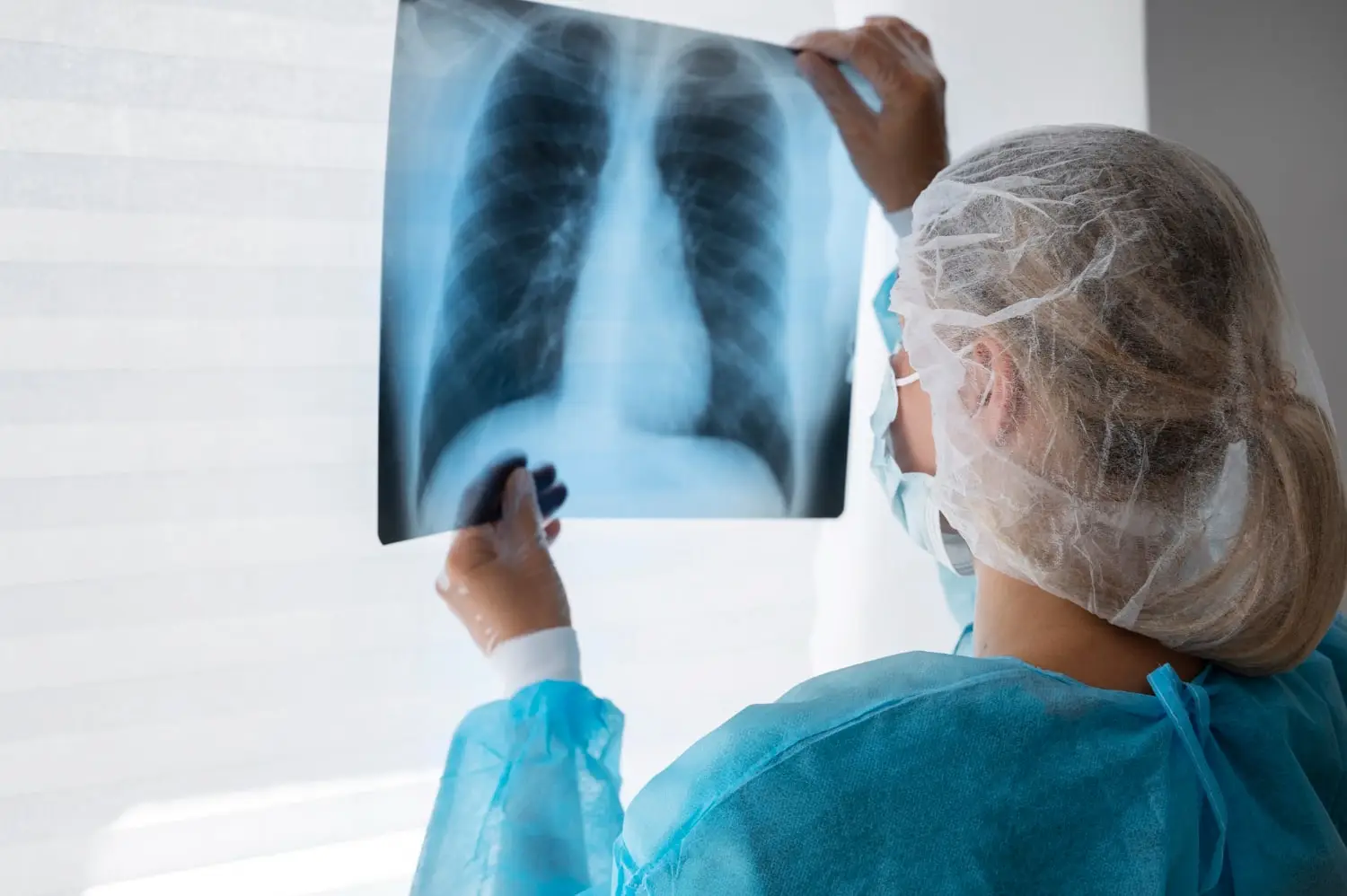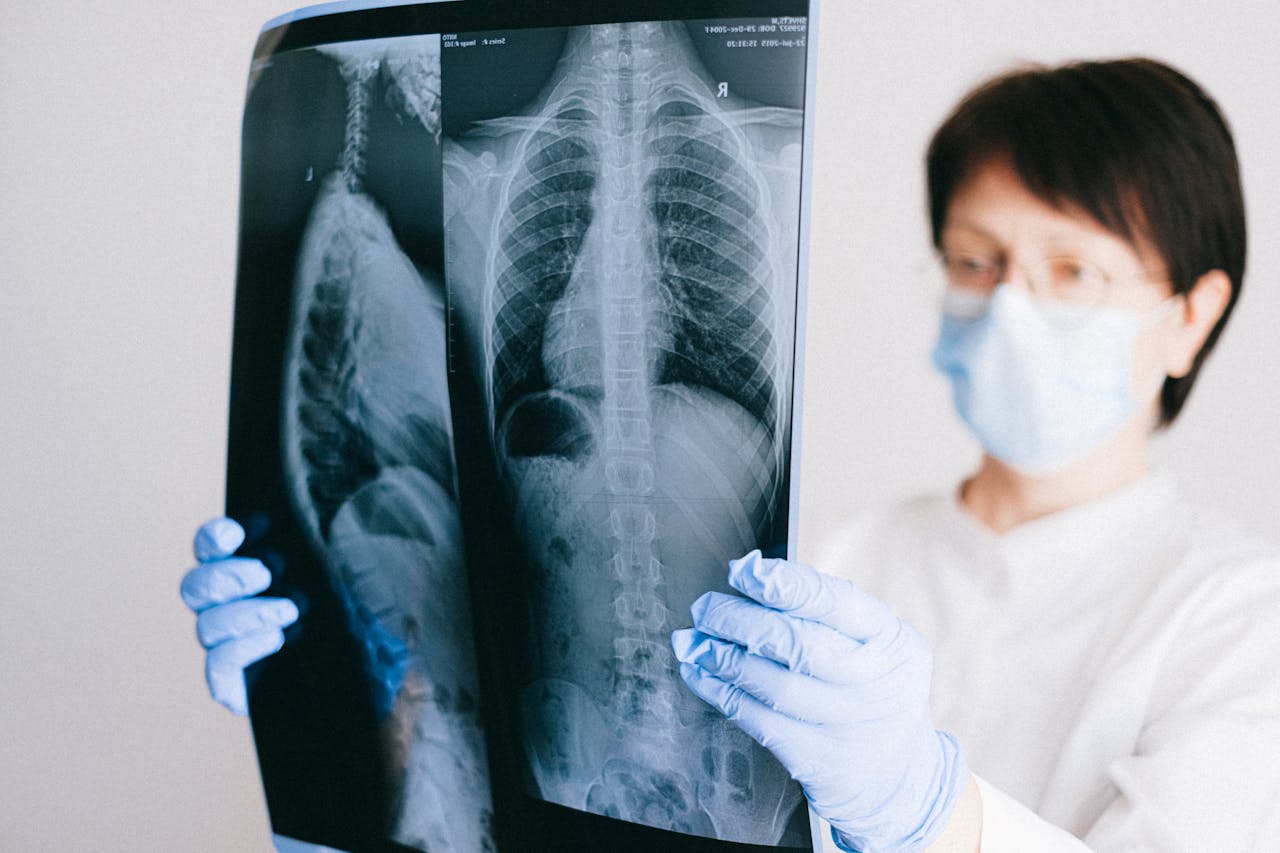The answer to the question, “What is a lung nodule?” can be summarized as round lesions smaller than 3 cm, which are largely benign. Due to their small size, nodules typically do not cause symptoms and are often discovered during imaging performed for other health issues. While benign nodules are usually monitored, malignant ones require immediate treatment.
What is a Lung Nodule?

A lung nodule is a round lesion less than 3 cm in size, usually with smooth boundaries. These round or oval-shaped lesions are detected during a CT scan, and their small size often means they cause no symptoms. Most nodules are benign (non-cancerous) and do not require treatment. However, some are malignant (cancerous) and carry a risk of developing into cancer. Therefore, prompt treatment is necessary after diagnosis. This is the general answer to the question, “What is a lung nodule?”
Nodules have different characteristics based on their structure. In general, their features include:
- They are round or oval-shaped. Their edges can be smooth or irregular, with irregular edges considered a negative sign.
- They vary in density. Some are less dense, while others are very dense. There are also heterogenous nodules.
- A nodule may appear as a single lesion or as multiple nodules.
The characteristics of nodules provide clues as to whether they are benign or malignant, but a biopsy is needed for a definitive result.
What Causes Lung Nodules?
Another common question about lung nodules is their causes. The reasons are as follows:
| Cause | Description |
|---|---|
| Infections | Conditions like tuberculosis and pneumonia can lead to these lesions. Infections are a significant cause of lung nodules. |
| Inflammation | Inflammatory diseases such as rheumatoid arthritis and sarcoidosis can also cause lung nodules. |
| Tumors | Both benign and malignant tumors can result in these small white lesions. Lung cancer is the most important cause of malignant nodules. |
| Smoking | Chemicals from smoking increase the risk of nodules. |
| Chemicals | Direct inhalation of chemical substances increases the risk of nodules and cancer. |
| Anomalies | Congenital anomalies are another common cause. |
| Air Pollution | Particles and harmful substances in polluted air can increase the risk of lung nodules. |
There are many causes of nodules, but determining their exact cause can be challenging after detection.
Types of Lung Nodules
 Lung nodules are classified into different types, including solid, subsolid, and ground-glass nodules. Solid nodules have a dense, opaque appearance, with largely regular edges, although irregular ones can also occur. Subsolid nodules are less dense and may reveal structures such as vessels within them.
Lung nodules are classified into different types, including solid, subsolid, and ground-glass nodules. Solid nodules have a dense, opaque appearance, with largely regular edges, although irregular ones can also occur. Subsolid nodules are less dense and may reveal structures such as vessels within them.
Subsolid nodules are further divided into mixed (solid and ground-glass) and pure ground-glass types. Another type is the ground-glass nodule, which gets its name from its distinctive appearance. Additionally, there are calcified nodules with a hardened structure, which are generally benign.
Symptoms of Lung Nodules
Symptoms of lung nodules vary depending on their size and location. In most cases, there are no symptoms. Rarely observed symptoms include:
- Persistent Cough: A cough caused by nodules pressing against the airways is one of the most common symptoms. A cough lasting longer than two weeks requires medical attention.
- Chest Pain: Although nodules are small, their location can cause pressure on nerves and tissues, resulting in chest pain. This pain may be constant or worsen during deep breaths.
- Shortness of Breath: Pressure on the alveoli or bronchi by the nodules can directly affect oxygen exchange, leading to shortness of breath.
- Weight Loss: Malignant nodules can cause unexplained weight loss due to cancer cells’ high energy use and immune system activation.
- Wheezing: Nodules narrowing the airways can result in wheezing sounds during breathing.
Additional symptoms include fever, night sweats, and bloody sputum. However, most nodules under 3 cm cause no symptoms, making early detection critical for effective treatment.
Treatment Methods for Lung Nodules
The primary approach to treating lung nodules is surgical intervention, particularly for malignant and high-risk nodules. Benign nodules are usually monitored periodically to assess growth. If no growth is observed, treatment may not be necessary.
For malignant or risky nodules, surgical methods—open or closed—are employed. Closed surgery, also known as single-port VATS, involves a single small incision through which a camera and surgical tools are inserted to remove the nodules.
Another important point to know about what is a lung nodule is that the surgery is performed by experienced surgeons. Prof. Dr. Semih Halezeroğlu has significant experience in surgically removing nodules, lesions, masses and tumors in the lung. You can contact us at any time for a detailed answer to the question of what is a lung nodule and details about treatment methods.
Will a Lung Nodule Disappear?
 Another important question to wonder about what is a lung nodule is whether the nodule will disappear on its own. There is a possibility that some nodules will disappear on their own. However, despite such a possibility, periodic follow-up should never be neglected. Because there is a possibility of shrinkage as well as growth. The growth of the nodule means that it is risky or malignant.
Another important question to wonder about what is a lung nodule is whether the nodule will disappear on its own. There is a possibility that some nodules will disappear on their own. However, despite such a possibility, periodic follow-up should never be neglected. Because there is a possibility of shrinkage as well as growth. The growth of the nodule means that it is risky or malignant.
What Destroys a Lung Nodule? Do Foods Destroy It?
When the answer to the question of what is a nodule in the lung and the treatment methods are examined, it is realized that the lesions in question can only be eliminated with follow-up or medical treatments. It is not possible to get rid of these lesions with food or non-medical methods.
Frequently Asked Questions About Lung Nodules
Frequently asked questions and answers about what is a lung nodule are listed below.
1 – What is a Lung Nodule?
2 – What Are the Symptoms of Lung Nodules?
Symptoms include cough, shortness of breath, chest pain, bloody sputum, and wheezing, although they are rare due to the small size of nodules.
3 – Can a 7mm Lung Nodule Be Treated?
Yes, most lung nodules, even small ones, are treatable, though many do not require intervention.
4 – What is a Subpleural Nodule?
Subpleural nodules are located beneath the lung lining and are often benign.
5 – Can COVID Cause Lung Nodules?
Yes, there is a risk of nodules forming after COVID. Monitoring is essential in such cases. If you need more information or treatment, feel free to contact us anytime.
6 – Does Lung Nodule Cause Cough?
Cough rarely occurs in lung nodules.



